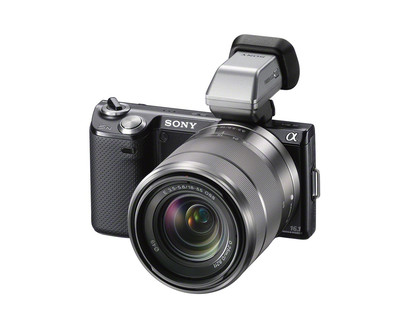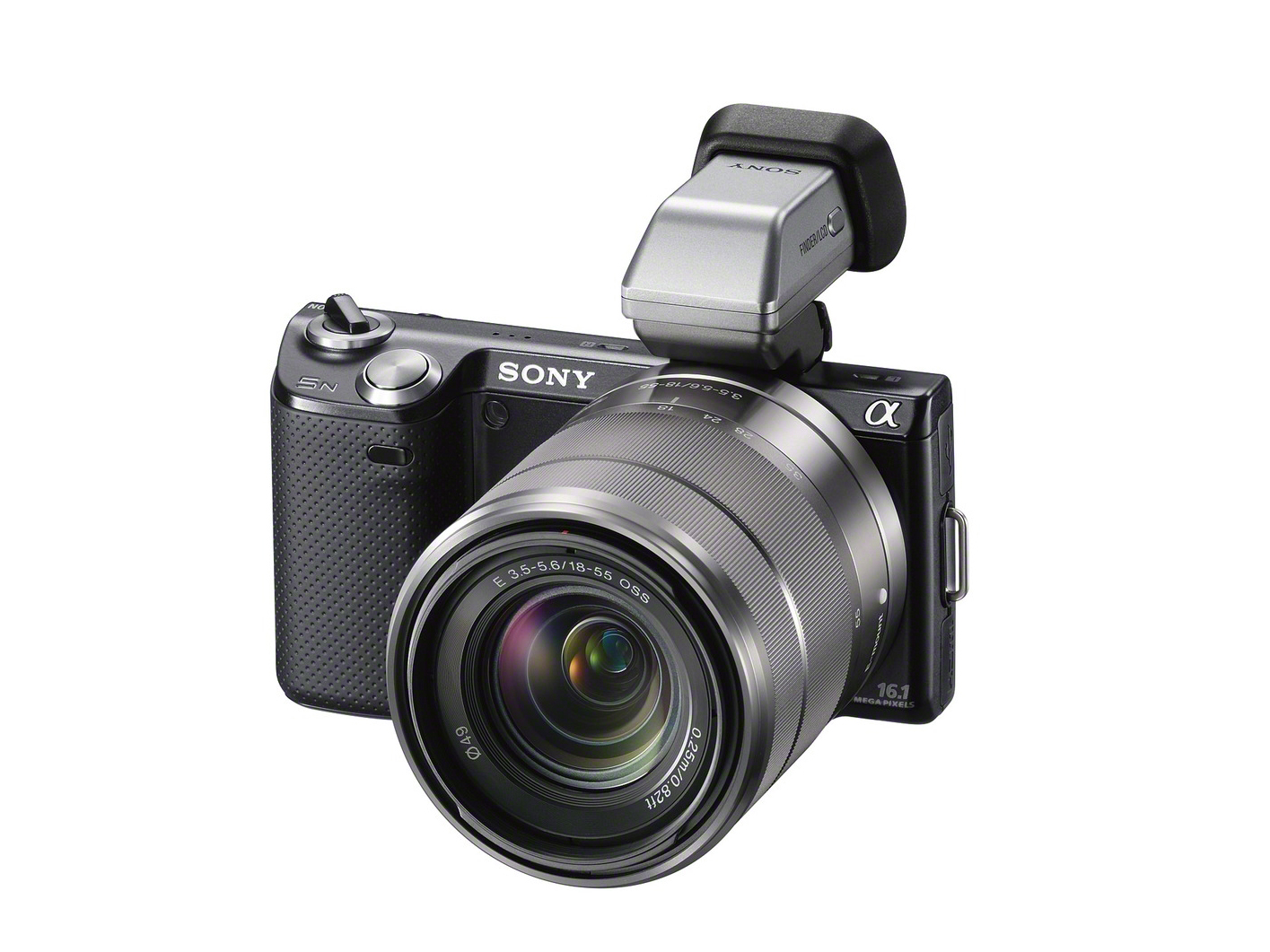Why you can trust TechRadar

As with Nikon's equally new V1 flagship CSC, the Sony NEX-5N has the kind of magnesium alloy construction usually reserved for mid-range DSLRs.
Not that it is immediately obvious, again thanks to that rather slender chassis weighing a body-only 210g - the lightest of the current NEX trio. Sony claims a depth of 23.3mm at its slimmest point, a pinch slimmer than the 24.2mm of its predecessor.
Although Sony's NEX series of Compact System Cameras incorporates some of the most svelte camera bodies in relation to the full APS-C sized sensors at their core, this compactness has, for us, always rather been undone by the physically larger E series lenses they've been matched with.
The result, as we see again with the Sony NEX-5N, is that, with the optically stabilised 18-55mm f/3.5-5.6 standard zoom that came with our £599 review kit attached to its E-mount, the camera looks oddly front-heavy. If we were cruel, we'd say that the NEX system still looked like a work in progress.
Still, if removing said lens, the Sony NEX-5N slips into a jacket pocket rather more easily than the majority of its CSC rivals, except the almost toy-like Pentax Q. And with the lens attached, it does feel like a more solid proposition overall.
An optically stabilised zoom is a must, incidentally, because unlike say the Olympus PEN range, including the Olympus PEN Lite E-PL3, Sony hasn't built anti-shake into the body itself.
JPEG and raw photos and 1920 x 1080p video are committed to either SD card or Sony's proprietary Memory Stick Pro Duo media, which share a slot in the base of the handgrip with the NP-FW50 rechargeable lithium ion battery.
Sign up for breaking news, reviews, opinion, top tech deals, and more.
The grip itself is barely larger than the battery it houses, but its pitted rubber surface prevents slippage while offering sufficient space to wrap three small fingers around, while the thumb rests on a tiny curved rubber pad at the back.
Funnily enough, although there's now touchscreen control, the scroll wheel and flanking function buttons at the top left and right of it remain on the backplate, and can be used for all selections. So if you're not a massive fan of touchscreens on cameras, you can ignore it.
Although there's not a physical shooting mode dial, a virtual version pops up on the screen, which the user can navigate with the thumb and a spin of the scroll wheel. Offered here are the expected Program, Aperture Priority, Shutter Priority, Manual, Panorama, Anti Motion Blur setting and scene modes, along with a smart auto mode that affords point and shoot simplicity.
While you might want to steer clear of the latter in busier scenes or with more detailed subjects, it's a more than reliable fall back when you want to concentrate on subject rather than settings.
It also means that, when set as a default, anyone trading up from a compact camera will be able to pick up the Sony NEX-5N and start taking colourful shots straight away.

When not wrestling wild bears or leaping tall buildings in a single bound, Gavin Stoker can be found editing British Photographic Industry News, the UK's longest running and only photo trade title. He has over 25 years of camera testing and reviewing under his belt.
